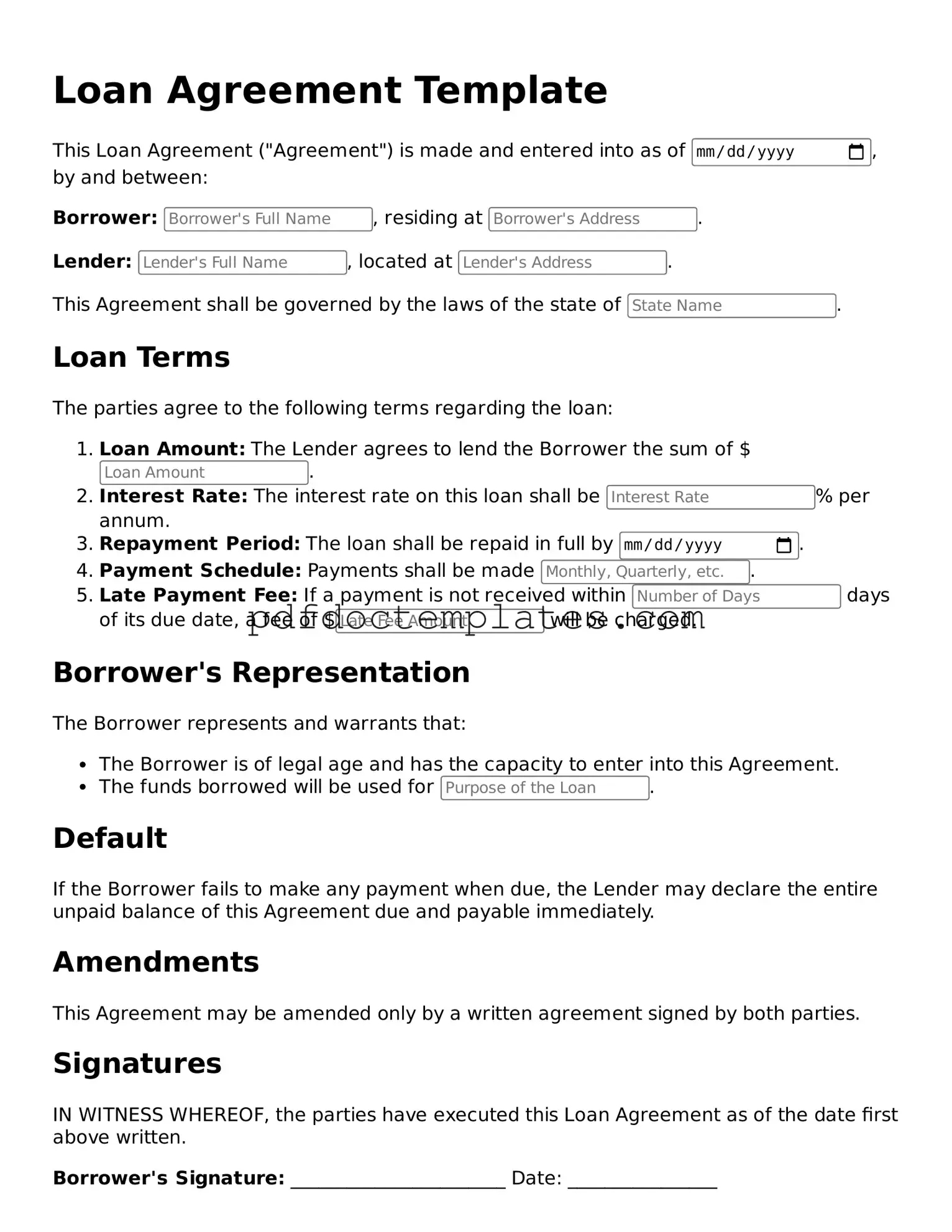Printable Loan Agreement Template
A Loan Agreement form is a legal document that outlines the terms and conditions of a loan between a lender and a borrower. It specifies the amount borrowed, interest rates, repayment schedule, and any collateral involved. To proceed with your loan, fill out the form by clicking the button below.
Access Your Document
